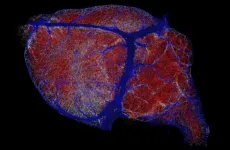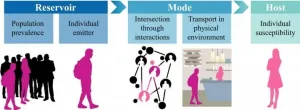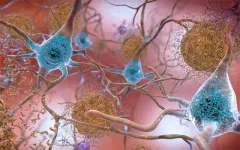(Press-News.org) Patients with type 2 diabetes that were treated with a weekly injection of the breakthrough drug Semaglutide were able to achieve an average weight loss of nearly 10kg, according to a new study published in The Lancet today.
Led by Melanie Davies, Professor of Diabetes Medicine at the University of Leicester and the Co-Director of the Leicester Diabetes Centre, the study showed that two thirds of patients with type 2 diabetes that were treated with weekly injections of a 2.4mg dose of Semaglutide were able to lose at least 5% of their body weight and achieved significant improvement in blood glucose control.
More than a quarter of patients were able to lose more than 15% of their body weight - far above that which has been observed with any other medicine administered to people with diabetes.
Professor Melanie Davies said:
"These results are exciting and represent a new era in weight management in people with type 2 diabetes - they mark a real paradigm shift in our ability to treat obesity, the results bring us closer to what we see with more invasive surgery.
"It is also really encouraging that along with the weight loss we saw real improvements in general health, with significant improvement in physical functioning scores, blood pressure and blood glucose control".
This global multi-centre trial was conducted at 149 sites in 12 countries across North America, Europe, South America, the Middle East, South Africa and Asia, involving 1,210 patients with type 2 diabetes whose current treatment was not achieving sufficient blood sugar control, for instance through diet and exercise, or through the use of metformin and other glucose lowering medicines used to control the disease.
It is one of a portfolio of studies conducted as part of the Semaglutide Treatment Effect for people with obesity Programme (STEP) programme. Professor Davies has been involved in all four of the STEP clinical trials involving Semaglutide for weight management completed so far, where the medication was shown to help patients achieve an average weight of loss of between 10kg and 17kg of body weight.
Being overweight or obese is a significant contributor to type 2 diabetes. Many patients can manage their type 2 diabetes by eating a healthy diet, taking regular exercise, and using medications to help control blood sugar, or achieve glycemic control but for a significant minority of patients who have not seen much improvement in spite of these methods, semiglutide is a promising development.
The LDC has a world-renowned, multi-disciplinary research team, which is leading the way and providing the evidence behind the Leicester Diabetes Centre's education programmes and widening the knowledge base for health and disease management.
INFORMATION:
This study was also supported by the NIHR Leicester Biomedical Research Centre, of which Professor Davies is the Director.
Semaglutide 2·4 mg once a week in adults with overweightor obesity, and type 2 diabetes (STEP 2): a randomised,double-blind, double-dummy, placebo-controlled, phase 3 trial by
Melanie Davies, Louise Færch, Ole K Jeppesen, Arash Pakseresht, Sue D Pedersen, Leigh Perreault, Julio Rosenstock, Iichiro Shimomura, Adie Viljoen, Thomas A Wadden, Ildiko Lingvay, for the STEP 2 Study Group* is published in The Lancet
Pregnant patients in Colorado may be told about parenting and adoption, but not abortion. This is according to a new study led by Kate Coleman-Minahan of the University of Colorado College of Nursing published in the END ...
Our brains are non-stop consumers. A labyrinth of blood vessels, stacked end-to-end comparable in length to the distance from San Diego to Berkeley, ensures a continuous flow of oxygen and sugar to keep our brains functioning at peak levels.
But how does this intricate system ensure that more active parts of the brain receive enough nourishment versus less demanding areas? That's a century-old problem in neuroscience that scientists at the University of California San Diego have helped answer in a newly published study.
Studying the brains of mice, a team of researchers led by Xiang Ji, David Kleinfeld and their colleagues has deciphered the question of brain energy consumption and blood vessel density through newly developed maps that detail ...
When you think about your carbon footprint, what comes to mind? Driving and flying, probably. Perhaps home energy consumption or those daily Amazon deliveries. But what about watching Netflix or having Zoom meetings? Ever thought about the carbon footprint of the silicon chips inside your phone, smartwatch or the countless other devices inside your home?
Every aspect of modern computing, from the smallest chip to the largest data center comes with a carbon price tag. For the better part of a century, the tech industry and the field of computation ...
Imagine you're driving up a hill toward a traffic light. The light is still green so you're tempted to accelerate to make it through the intersection before the light changes. Then, a device in your car receives a signal from the controller mounted on the intersection alerting you that the light will change in two seconds -- clearly not enough time to beat the light. You take your foot off the gas pedal and decelerate, saving on fuel. You feel safer, too, knowing you didn't run a red light and potentially cause a collision in the intersection.
Connected and automated vehicles, which can interact vehicle to vehicle (V2V) and between vehicles and roadway ...
Type 2 diabetes, once considered an adult disease, is increasingly causing health complications among American youth. A research review published in the Journal of Osteopathic Medicine suggests physicians should work to more aggressively prevent pediatric diabetes.
Because few pediatric Type 2 diabetes treatment options are available, prevention is unusually important. To improve health outcomes, the paper's authors recommend physicians conduct regular screenings of children and adolescents, adopt a high level of suspicion, and intervene early and often with families who have children at risk for prediabetes and T2 diabetes.
"Pediatric type 2 diabetes is more progressive and aggressive than adult-onset Type 2 diabetes," ...
Boulder, Colo., USA: Several articles were published online ahead of print
for GSA Bulletin in February. Topics include earthquake cycles in
southern Cascadia, fault dynamics in the Gulf of Mexico, debris flow after
wildfires, the assembly of Rodinia, and the case for no ring fracture in
Mono basin.
Jurassic evolution of the Qaidam Basin in western China: Constrained by
stratigraphic
succession, detrital zircon U-Pb geochronology and Hf isotope analysis
Tao Qian; Zongxiu Wang; Yu Wang; Shaofeng Liu; Wanli Gao ...
Abstract:
The formation and evolution of an intracontinental basin triggered via the
subduction or collision of plates at continental margins can record
intracontinental tectonic processes. As a typical ...
In the 1995 movie "Outbreak," Dustin Hoffman's character realizes, with appropriately dramatic horror, that an infectious virus is "airborne" because it's found to be spreading through hospital vents.
The issue of whether our real-life pandemic virus, SARS-CoV-2, is "airborne" is predictably more complex. The current body of evidence suggests that COVID-19 primarily spreads through respiratory droplets - the small, liquid particles you sneeze or cough, that travel some distance, and fall to the floor. But consensus is mounting that, under the right circumstances, smaller floating particles called aerosols can carry the virus over longer distances and remain ...
Amyloid plaques are pathological hallmarks of Alzheimer's disease (AD) -- clumps of misfolded proteins that accumulate in the brain, disrupting and killing neurons and resulting in the progressive cognitive impairment that is characteristic of the widespread neurological disorder.
In a new study, published March 2, 2021 in the Journal of Experimental Medicine (JEM), researchers at University of California San Diego School of Medicine, Massachusetts General Hospital and elsewhere have identified a new drug that could prevent AD by modulating, rather than inhibiting, a key enzyme involved ...
WEST LAFAYETTE, Ind. -- When quantum computers become more powerful and widespread, they will need a robust quantum internet to communicate.
Purdue University engineers have addressed an issue barring the development of quantum networks that are big enough to reliably support more than a handful of users.
The method, demonstrated in a paper published in Optica, could help lay the groundwork for when a large number of quantum computers, quantum sensors and other quantum technology are ready to go online and communicate with each other.
The team deployed a programmable switch to adjust how much data goes to each ...
Scientists regularly use remote sensing drones and satellites to record how climate change affects permafrost thaw rates -- methods that work well in barren tundra landscapes where there's nothing to obstruct the view.
But in boreal regions, which harbor a significant portion of the world's permafrost, obscuring vegetation can stymy even the most advanced remote sensing technology.
In a study published in January, researchers in Germany and at the University of Alaska Fairbanks' Geophysical Institute developed a method of using satellite imagery to measure the depth of thaw directly above permafrost in boreal ecosystems. Rather than trying to peer past ...





